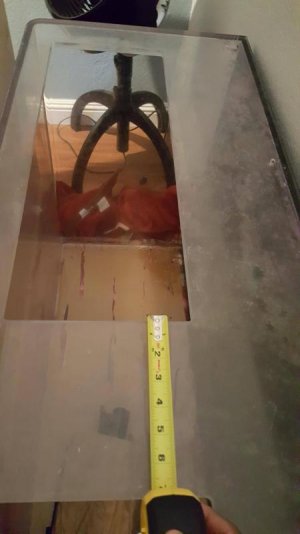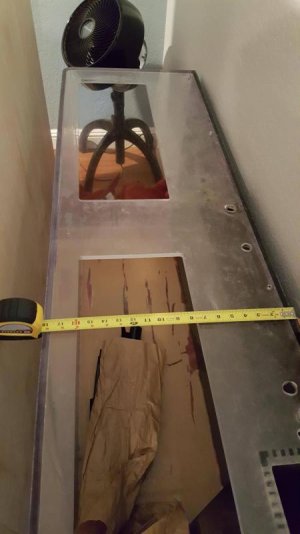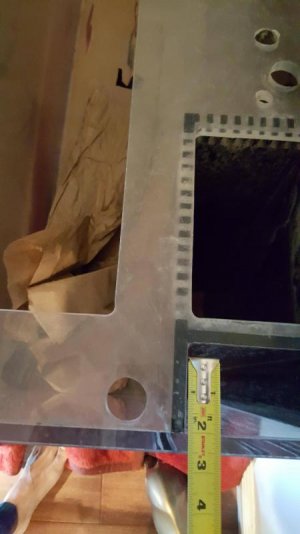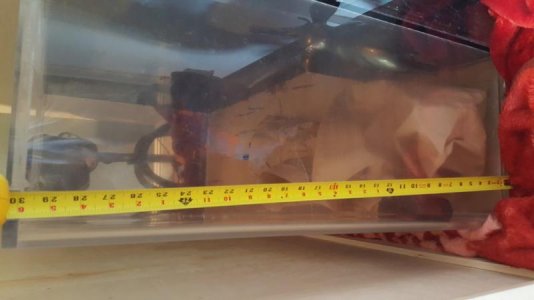Cutting the top of my 140G tall TruVu acrylic system
Cutting the top of my 140G tall TruVu acrylic system
I got this 140 Gallon (60"x18"x30") TruVu acrylic fish-tank from CL few months back and I am setting this up.
The acrylic thickness is 1/2"
This has a standard configuration with a top bracing and has just 2 small openings to interface within the inside of tank. I want to cut the top of it and make the openings larger or if possible remove entirely or reduce the thickness of the center bracing as well if that won't compromise the structural stability of the tank. Currently the center bracing is 6 inches wide. Also what tool can be used to cut the top ?
Kindly advise on this.
Cutting the top of my 140G tall TruVu acrylic system
I got this 140 Gallon (60"x18"x30") TruVu acrylic fish-tank from CL few months back and I am setting this up.
The acrylic thickness is 1/2"
This has a standard configuration with a top bracing and has just 2 small openings to interface within the inside of tank. I want to cut the top of it and make the openings larger or if possible remove entirely or reduce the thickness of the center bracing as well if that won't compromise the structural stability of the tank. Currently the center bracing is 6 inches wide. Also what tool can be used to cut the top ?
Kindly advise on this.
Last edited:




